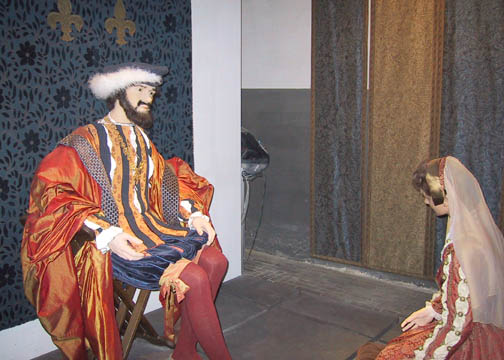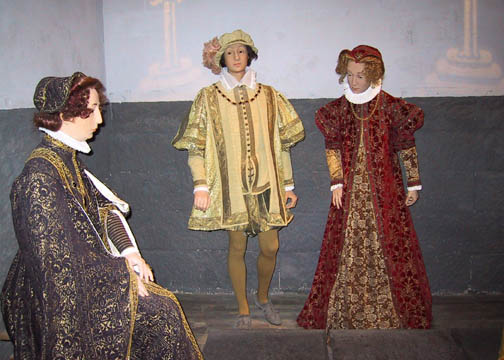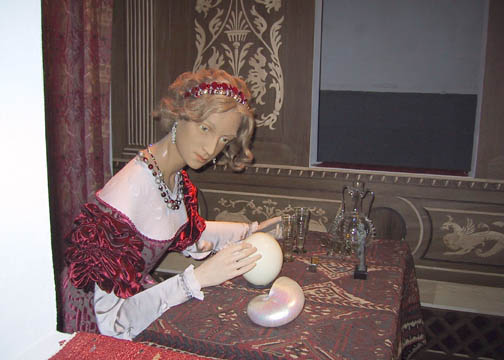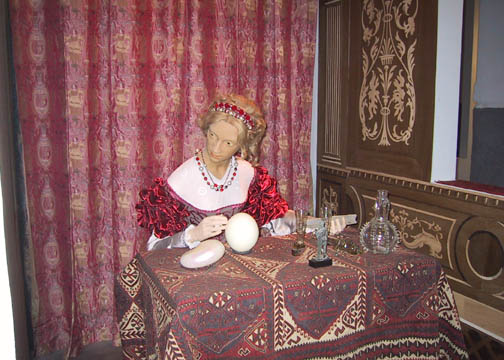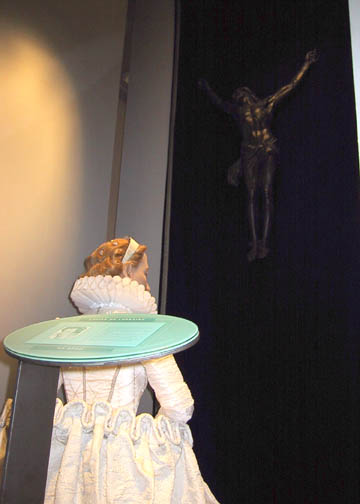The
women responsible for Chenonceau each left their mark. Katherine Briçonnet,
wife of the first owner, built the turreted pavilion and one of the first
straight staircases in France here; Henri II's mistress, Diane de Poitiers,
added the formal gardens and arched bridge over the river Cher; Catherine de
Medici transformed the bridge into an Italian-style gallery (having evicted
Diane following her husband's death in 1559); Louise of Lorraine, bereaved wife of
Henri III, inherited the château in 1590 and painted the ceilings black and
white, the colours of royal mourning; Madame Dupin, a cultured 18th century châtelaine,
saved the château from destruction during the Revolution; and Madame Pelouze
undertook a complete restoration in 1863. The Ladies' Gallery was built in the
former Royal Stables. Historical circuit in Chenonceau, from the Renaissance to
World War I. Below are some of the exhibits to be seen.
Below
left is François I, father of Henry II. François
I's reign from 1515 to 1547 witnessed the apogee of the French Renaissance,
characterized by an intense period of château-building
and an interest in humanism and the arts. The itinerant court travelled between
the pleasure palaces of Amboise, Blois and Chambord in the Loire. Days were
devoted to hunting, falconry, fêtes champêtres
(country festivals) or jeu de paume, a forerunner of tennis. Nights were given
over to feasting, balls, poetry and romantic assignations. Dinner usually took
place before 7pm to the accompaniment of Italian music. Humanist texts were read
aloud and the king's fools amused the courtiers. Below
right is François II and Mary Stuart being received by
Catherine de Medici. |
